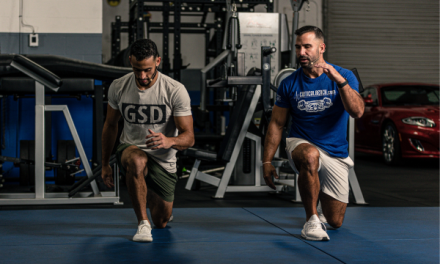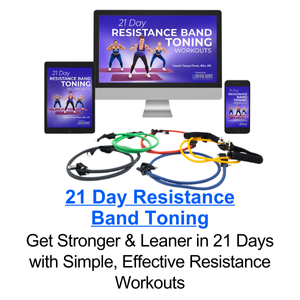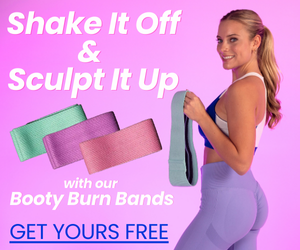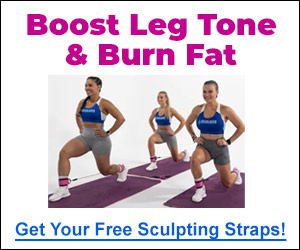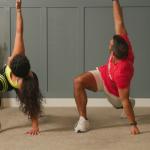Are your core workouts actually making your waistline thicker instead of stronger?
It’s a shocking reality that many fitness enthusiasts face due to common mistakes in their routines.
While core exercises are essential for building a solid foundation and improving overall fitness, improper form and technique can sabotage your results, leaving you frustrated and plateaued.
In this post, we’ll expose the five most common core exercise mistakes that might be undermining your efforts and show you how to fix them for optimal results.
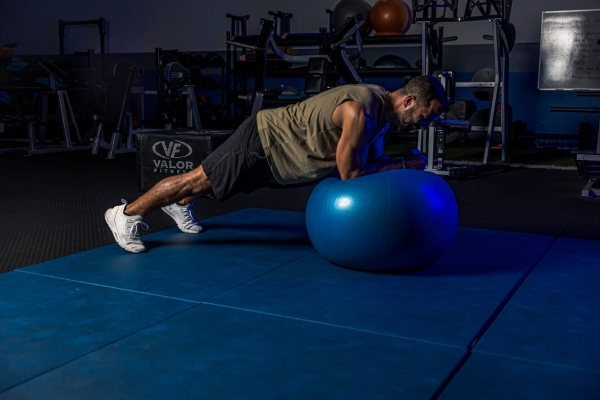
1. Poor Posture and Alignment
Alright, let’s get real about posture and alignment.
You wouldn’t build a house on a shaky foundation, so why would you do the same with your core workouts?
Maintaining proper posture is crucial for maximizing your gains and preventing injury.
Common Posture Mistakes
Here are some of the most common postural mistakes we see with people performing core exercises:
Rounded Back: If your back looks like a question mark during exercises like planks or sit-ups, you’re doing it wrong. A rounded back not only reduces the effectiveness of the exercise but also puts unnecessary strain on your spine.
Tilted Pelvis: An anterior pelvic tilt—where your butt sticks out and your lower back arches excessively—can wreak havoc on your lower back and hamper your core engagement.
Fixing Your Posture
Here’s how to correct your posture when performing core exercises:
Neutral Spine: Always aim for a neutral spine. Imagine there’s a straight line from your head to your hips. This alignment ensures that you’re engaging the core muscles correctly without putting stress on your back.
Engage the Glutes: During exercises like planks, squeeze your glutes to maintain a straight line from head to heels. This not only stabilizes your pelvis but also activates more muscles.
Shoulder Blades Back and Down: Keep your shoulder blades retracted and depressed to avoid the rounded back syndrome. This helps in maintaining an upright posture and fully engaging the core.

2. Over-Relying on Crunches
So you think crunches are the holy grail of core workouts?
Think again.
Crunches might have their place, but if you’re relying solely on them, you’re selling your core short. Here’s why.
Limited Range of Motion: Crunches primarily target the rectus abdominis, but they miss out on the obliques and deeper core muscles like the transverse abdominis.
Potential for Neck Strain: Ever feel that nagging neck pain after a crunch session? That’s because many people pull on their necks instead of using their core, leading to poor form and potential injury.
Plateau Effect: Doing the same exercise over and over leads to diminishing returns. Your muscles adapt, and you stop seeing progress.
Why a Varied Core Workout is More Effective
To build a rock-solid core, you need to hit it from all angles.
A varied routine ensures that you’re not just building the superficial six-pack muscles but also strengthening the deeper stabilizers that support your spine and improve overall functionality.

3. Not Engaging the Core Properly
If you’re not engaging your core properly, you’re wasting your time and effort.
What does it mean to engage the core?
Think of your core as a cylinder of muscles that includes your abs, obliques, and lower back.
When you engage it properly, you’re activating all these muscles to create a strong, stable foundation.
One of the most common core workout mistakes is allowing other muscles to stand in for the target muscles.
Hip Flexors Taking Over: This is a big one. During exercises like leg raises or sit-ups, if you feel the burn more in your hips than in your abs, your hip flexors are doing the work your core should be doing.
Overarching the Lower Back: If your lower back is arching excessively during exercises like planks or sit-ups, you’re not engaging your core properly. This not only reduces the effectiveness but also puts your lower back at risk of injury.
Tips for Proper Core Engagement
Here are some things to keep in mind as you move through your core exercises:
Pelvic Tilt: Start with a slight posterior pelvic tilt. Imagine pulling your belly button towards your spine and tucking your pelvis slightly. This helps in engaging the deep core muscles.
Brace, Don’t Suck In: Think of bracing your core like you’re about to take a punch in the stomach. This means tightening your core muscles, not sucking in your stomach. This creates a solid, stable base.
Mind-Muscle Connection: Focus on the muscles you’re trying to engage. During exercises, place your hand on your abs to feel them working. This helps to ensure that you’re activating the right muscles.
Controlled Movements: Slow down and control your movements. Rushing through reps often leads to poor form and lack of proper engagement. Focus on quality over quantity.

4. Incorrect Breathing Techniques
Breathing – it’s something we do without thinking, but when it comes to core exercises, getting it wrong can mess up your performance big time.
Proper breathing is important for maximizing your core workouts and ensuring you’re engaging the right muscles.
Breathing properly helps stabilize your spine, engage your core, and prevent unnecessary strain on your muscles. It’s the key to maintaining form and powering through those tough reps.
Common Breathing Mistakes
Here are some common mistakes that people make when breathing during a core workout:
Holding Your Breath: Known as the Valsalva maneuver, holding your breath during core exercises can increase blood pressure and decrease oxygen flow, making you tire out faster.
Shallow Breathing: Taking quick, shallow breaths doesn’t provide your muscles with enough oxygen. It can lead to fatigue and poor muscle engagement, undermining your workout.
Breathing Techniques to Improve Performance
And here’s how to correct those common breathing mistakes:
Exhale on Exertion: Whether you’re crunching, planking, or lifting, exhale during the hardest part of the movement. For example, exhale as you crunch up or as you lift your legs. This helps engage your core and provides stability.
Inhale During Relaxation: Inhale during the easier part of the exercise. For example, when returning to the starting position in a crunch or lowering your legs in a leg raise. This ensures a steady flow of oxygen and keeps your movements controlled.
Diaphragmatic Breathing: Focus on deep belly breathing instead of shallow chest breathing. Place one hand on your chest and one on your belly. Your belly should rise more than your chest as you inhale. This type of breathing engages the diaphragm and enhances core stability.

5. Neglecting Progressive Overload
If you’re not challenging your core, you’re not changing it.
Progressive overload is the key to continuous improvement and gains in core strength.
So, what exactly is progressive overload?
It’s the gradual increase of stress placed on your body during exercise. Simply put, you need to keep pushing your limits to see progress.
Progressive overload forces your muscles to adapt, grow stronger, and become more resilient.
Without it, your muscles get used to the same routine, leading to plateaus where you stop seeing results.
Mistake: Sticking to the Same Routine
Doing the same exercises with the same weight and reps week after week? That’s a recipe for stagnation.
Your muscles need new challenges to grow.
Your body is smart. It adapts to the stress you place on it. If you’re not increasing the difficulty, you’re not giving your muscles a reason to get stronger.
Incorporating Progressive Overload
Here’s how to utilize progressive overload to your advantage:
Increase Reps: Start by adding a few more reps to your sets. If you’re comfortable doing 15 crunches, aim for 20. Small increments can lead to big changes over time.
Add Resistance: Use a weight plate or a resistance band to add extra challenge to your core exercises. Weighted planks, for instance, can significantly boost your core strength.
Vary Exercises: Introduce new exercises to target your core from different angles. Instead of just doing planks, try adding variations like side planks or plank with leg lifts.
Increase Intensity: Reduce rest times between sets or add more challenging variations of your favorite exercises. For example, switch from regular planks to plank jacks.

Wrap-Up
Let’s wrap this up. We’ve dissected the five common mistakes that could be sabotaging your core workouts:
- Poor Posture and Alignment: Keep that spine neutral and those glutes engaged.
- Over-relying on Crunches: Mix it up with planks, leg raises, and Russian twists.
- Not Engaging the Core Properly: Focus on proper engagement, not just going through the motions.
- Incorrect Breathing Techniques: Exhale on exertion and use diaphragmatic breathing.
- Neglecting Progressive Overload: Continuously challenge your core by increasing reps, adding resistance, and varying exercises.
Now, it’s your turn. Assess your own core routine.
Are you making any of these mistakes? If so, it’s time to correct them and take your core training to the next level.
Want an even more effective way to sculpt your core?
Try our program, Slide Your Way to a Flat Stomach.
This innovative approach combines dynamic core exercises with a sliding disc system to maximize your results.
Don’t let mistakes hold you back. Get the program and start transforming your core today!




